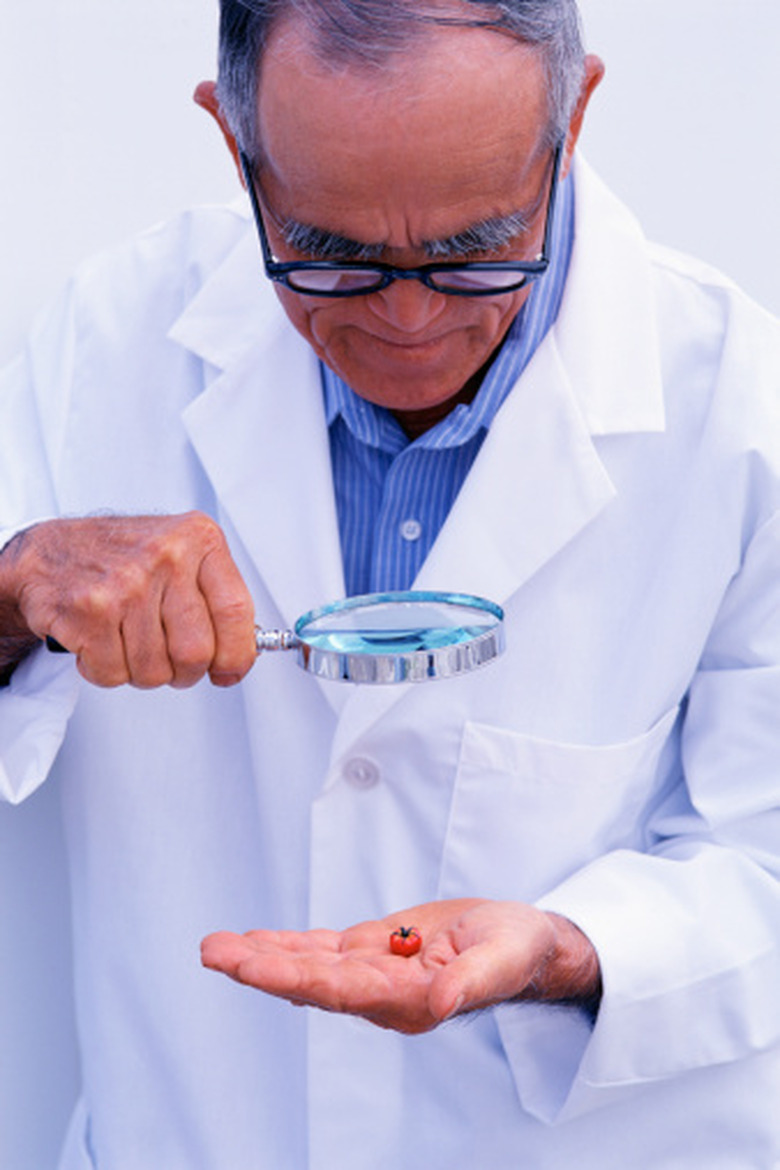Types Of Genetic Crosses
In genetics, crossing two organisms involves mating them and looking at the resulting progeny to better understand inheritance of a particular trait. Austrian monk Gregor Mendel, the father of modern genetics, formulated his laws of inheritance based on experiments in which he crossed pea plants that had different characteristics. There are several common kinds of genetic crosses you'll encounter in your studies.
Monohybrid Cross
Monohybrid Cross
In a monohybrid cross, the parent organisms differ in a single characteristic. Suppose, for example, two humans have children. The father has a widow's peak and the mother does not. A widow's peak is a dominant trait, meaning that if the child inherits the gene for this trait from one parent, that child will have a widow's peak regardless of the gene inherited from the other parent.
Consequently, there are two possibilities. The child could inherit the widow's peak gene from his father, or he could inherit the non-widow's peak gene from his father. He will inherit a non-widow's peak gene from its mother, who does not have the widow's peak gene. In this particular monohybrid cross, there is a fifty-fifty chance that any given child will have a widow's peak.
Dihybrid Cross
Dihybrid Cross
In a dihybrid cross, the parents differ in two characteristics you want to study. The pattern of inheritance here is somewhat more complicated. Suppose, for example, that you have two parents, one of whom has dimples and a widow's peak while the other has no dimples and no widow's peak. Dimples, like a widow's peak, are a dominant trait. Consequently, if these two traits are not linked, each child has a 1/4 probability of inheriting dimples and widow's peak, a 1/4 probability of inheriting dimples but no widow's peak, a 1/4 probability of inheriting a widow's peak but no dimples, and a 1/4 probability of inheriting neither. Keep in mind, however, that linked traits might exhibit very different patterns.
Backcross
Backcross
In a backcross, two lines are crossed to yield a hybrid. Next, selected individuals from the progeny are crossed with one of the parents (or with an organism genetically similar to the parent). In plant breeding, a backcross is very valuable, because breeders can hybridize a high-yielding variety with another variety to introduce a desired trait (such as disease resistance), then backcross to make sure the progeny have the same desirable characteristics as the high-yielding variety.
Testcross
Testcross
Sometimes geneticists need to find out more about an organism with an unknown combination of genes. They often use a method called a testcross, in which the organism is crossed with an organism who has a known genotype. Albinism, for example, is typically a recessive trait, meaning that you will be albino only if you inherit the gene for that trait from both parents. Consequently, if you had a non-albino alligator but you suspect it might have one albino gene and one "normal" gene, you could cross it with an albino alligator. You know the albino alligator has two albino genes, therefore the ratio of albino progeny to non-albino progeny will help you figure out the non-albino alligator's genotype (the combination of genes it inherited from its parents).
References
- "Genetics: A Conceptual Approach"; Benjamin A. Pierce; 2006
Cite This Article
MLA
Brennan, John. "Types Of Genetic Crosses" sciencing.com, https://www.sciencing.com/types-of-genetic-crosses-12749779/. 31 May 2011.
APA
Brennan, John. (2011, May 31). Types Of Genetic Crosses. sciencing.com. Retrieved from https://www.sciencing.com/types-of-genetic-crosses-12749779/
Chicago
Brennan, John. Types Of Genetic Crosses last modified August 30, 2022. https://www.sciencing.com/types-of-genetic-crosses-12749779/
